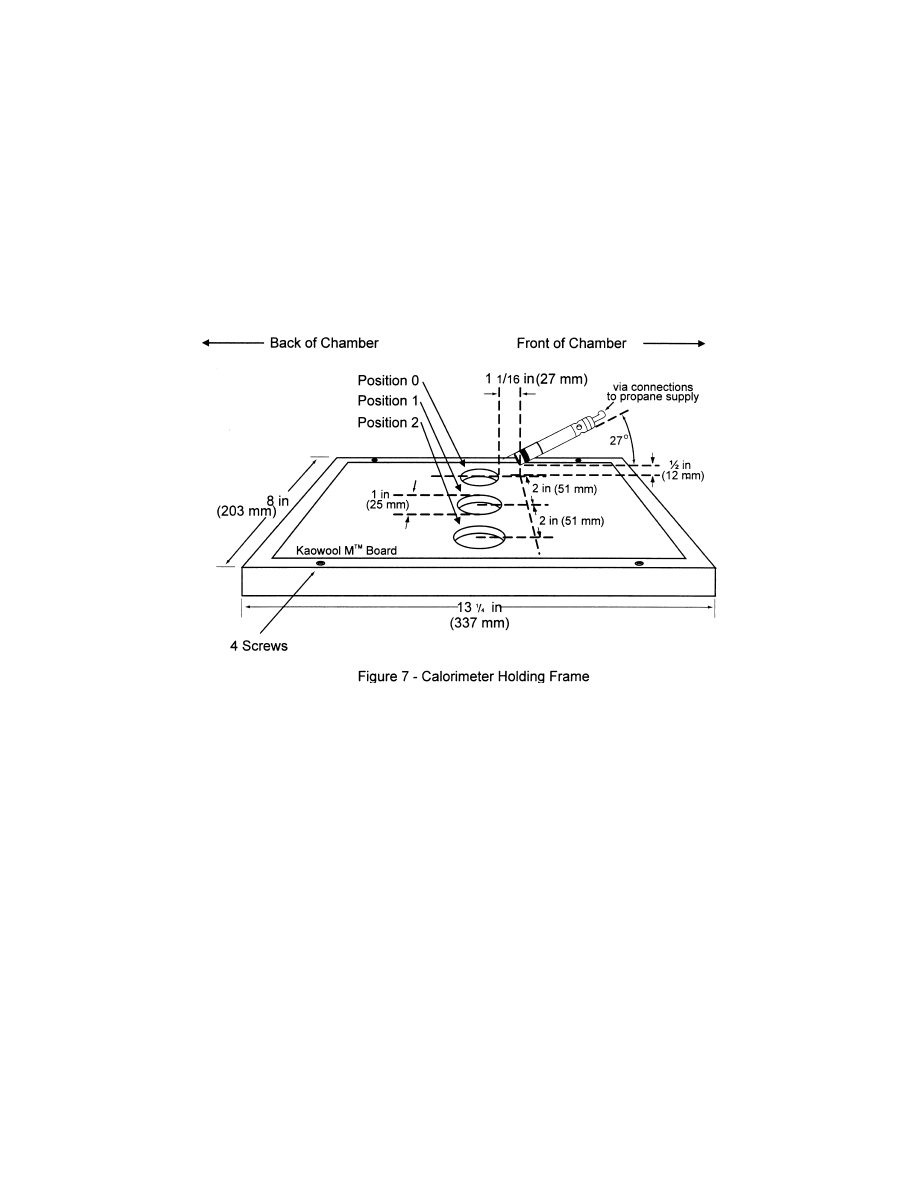
426
14 CFR Ch. I (1–1–19 Edition)
Pt. 25, App. F
first hole to the radiant panel and the dis-
tance between holes is the same as described
in this paragraph.
(9)
Instrumentation.
Provide a calibrated re-
cording device with an appropriate range or
a computerized data acquisition system to
measure and record the outputs of the calo-
rimeter and the thermocouple. The data ac-
quisition system must be capable of record-
ing the calorimeter output every second dur-
ing calibration.
(10)
Timing device.
Provide a stopwatch or
other device, accurate to
±
1 second/hour, to
measure the time of application of the pilot
burner flame.
(c)
Test specimens.
(1)
Specimen preparation.
Prepare and test a minimum of three test
specimens. If an oriented film cover material
is used, prepare and test both the warp and
fill directions.
(2)
Construction.
Test specimens must in-
clude all materials used in construction of
the insulation (including batting, film,
scrim, tape etc.). Cut a piece of core material
such as foam or fiberglass, and cut a piece of
film cover material (if used) large enough to
cover the core material. Heat sealing is the
preferred method of preparing fiberglass
samples, since they can be made without
compressing the fiberglass (‘‘box sample’’).
Cover materials that are not heat sealable
may be stapled, sewn, or taped as long as the
cover material is over-cut enough to be
drawn down the sides without compressing
the core material. The fastening means
should be as continuous as possible along the
length of the seams. The specimen thickness
must be of the same thickness as installed in
the airplane.
(3)
Specimen Dimensions.
To facilitate prop-
er placement of specimens in the sliding
platform housing, cut non-rigid core mate-
rials, such as fiberglass, 12
1
⁄
2
inches (318mm)
wide by 23 inches (584mm) long. Cut rigid
materials, such as foam, 11
1
⁄
2
±
1
⁄
4
inches (292
mm
±
6mm) wide by 23 inches (584mm) long in
order to fit properly in the sliding platform
housing and provide a flat, exposed surface
equal to the opening in the housing.
(d)
Specimen conditioning.
Condition the
test specimens at 70
±
5
°
F (21
±
2
°
C) and 55%
±
10% relative humidity, for a minimum of 24
hours prior to testing.
(e)
Apparatus Calibration.
(1) With the slid-
ing platform out of the chamber, install the
calorimeter holding frame. Push the plat-
form back into the chamber and insert the
calorimeter into the first hole (‘‘zero’’ posi-
tion).
See
figure 7. Close the bottom door lo-
cated below the sliding platform. The dis-
tance from the centerline of the calorimeter
VerDate Sep<11>2014
12:50 Apr 30, 2019
Jkt 247046
PO 00000
Frm 00436
Fmt 8010
Sfmt 8002
Y:\SGML\247046.XXX
247046
ER31JY03.010</GPH>
spaschal on DSK3GDR082PROD with CFR